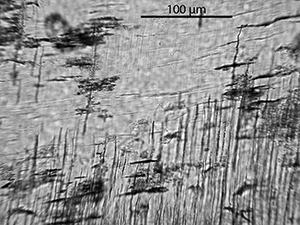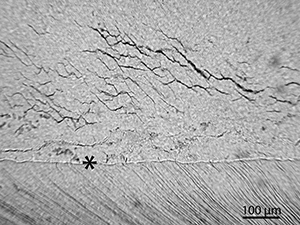
Since dentine and cementum are chemically similar materials to bone, these are also prone to mineral dissolution and low pH. This was seen in 12 samples (35%) and is indicated by low GHI and high OHI, since this former index records both bioerosion and generalised destruction. Microcracking was not observed in dentine/cementum of any of the teeth, but large cracks are found, often in conjunction with generalised destruction.



